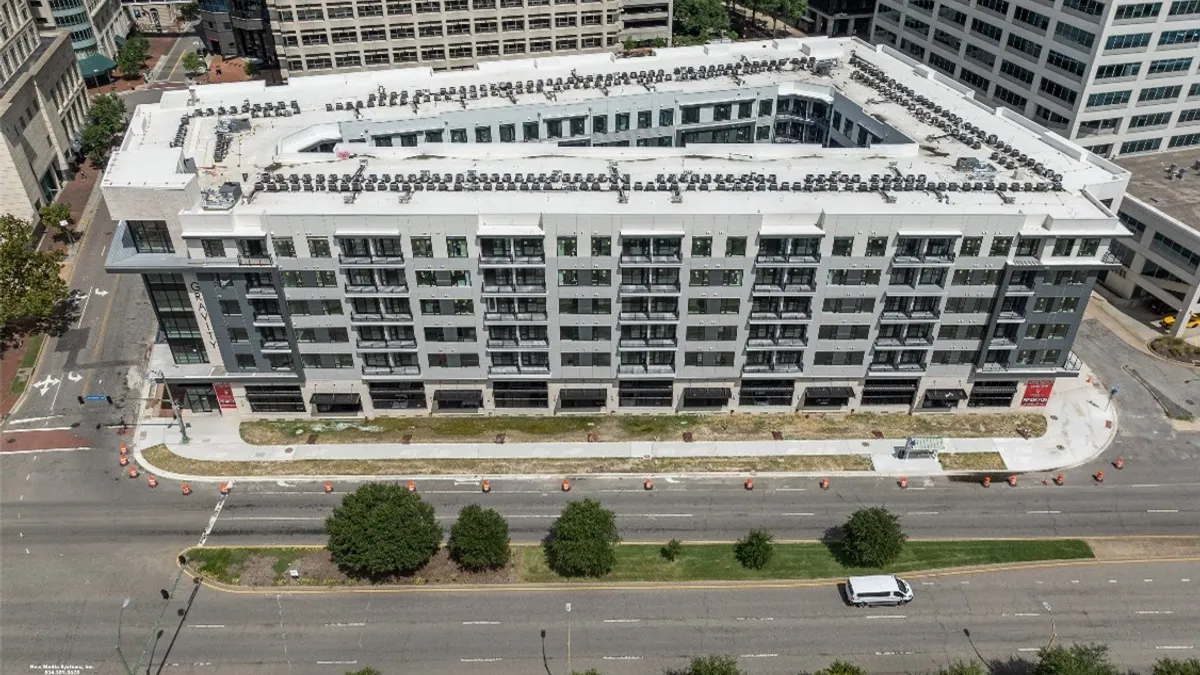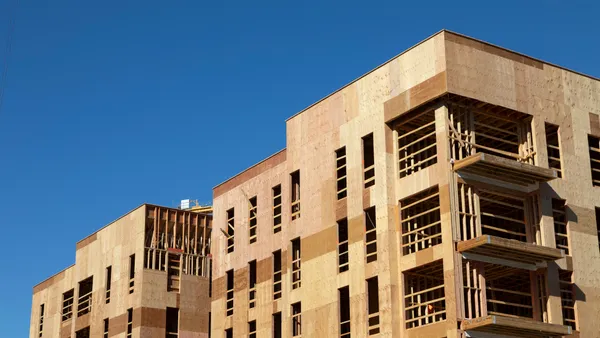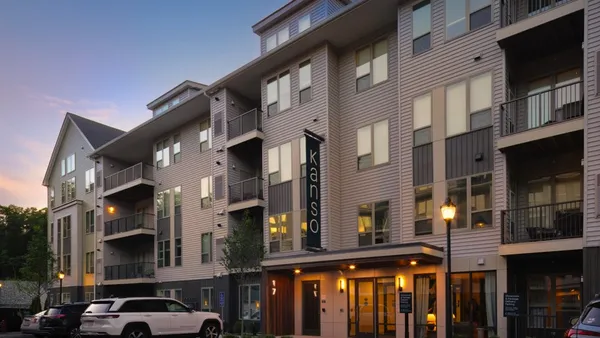Dive Brief:
- The average multifamily asking rent rose by $3 in March, up to $1,706. This marks the first time in three months that the national average rent has grown on a month-to-month basis, according to the latest Yardi Matrix Multifamily National Report.
- Year over year, rent growth has fallen to 4.0%, or 90 basis points down from February — the lowest level recorded since April 2021. At the same time, the national occupancy rate fell by 10 basis points YOY, down to 95.1%, after holding steady through the first quarter.
- Although the Silicon Valley Bank and Signature Bank collapses destabilized the financial markets last month, multifamily fundamentals are holding steady, according to Yardi. Rents and the national occupancy rate were unchanged in the first quarter, and 21 out of the 30 largest metro markets recorded rent gains in March, led by Boston at 1.0%.
Dive Insight:
Given high interest rates, affordability concerns and ongoing deceleration in rent gains, the last quarter’s rent performance is considered stable for the start of the traditional growth season, according to Yardi. The firm expects only modest rent growth through the rest of 2023, but the tight job market is expected to boost household formations, and high single-family home prices are set to keep potential buyers in the rental market.
Rents rose in 28 out of the top 30 metros on a YOY basis. Indianapolis continues to lead at 8.6% rent growth YOY, while Kansas City, not ordinarily a high-growth market, came in second this month with 6.9%. Yardi attributes this to the market’s strong economy, population growth, low unemployment rate and very low delivery rate. Las Vegas and Phoenix, one-time leaders in YOY rent growth, were the only two markets in the negatives.
| Market | YOY rent growth, March 2023 | YOY rent growth, February 2023 | Difference |
|---|---|---|---|
| Indianapolis | 8.6% | 9.0% | -0.4 |
| Kansas City, Missouri | 6.9% | 7.9% | -1 |
| New York | 6.9% | 7.0% | -0.1 |
| Boston | 5.8% | 6.1% | -0.3 |
| Miami metro | 5.2% | 6.3% | -1.1 |
| Chicago | 5.2% | 6.3% | -1.1 |
| Portland, Oregon | 4.7% | 5.8% | -1.1 |
| San Jose, California | 4.5% | 6.1% | -1.6 |
| Orlando, Florida | 4.2% | 5.8% | -1.6 |
| Charlotte, North Carolina | 4.2% | 5.1% | -1.1 |
SOURCE: Yardi Matrix
While Yardi does not anticipate any systemic disaster as a result of the recent bank collapses, the firm does expect that banks — especially small to mid-size ones like SVB or Signature — will become more cautious in their lending on commercial properties. Both banks had billions invested in multifamily, and Signature was one of the top multifamily lenders in New York City.
“Smaller banks hold a disproportionately large share of commercial real estate loans,” Jack Mullen of Summer Street Advisors noted in the report. “While banks assess the health of their portfolios, they are likely to become cautious about lending on commercial properties.”
While Mullen anticipates a pullback in bank lending, he also notes that this trend could create opportunities for non-bank lenders to move into the space.











